Ill assume you've just bought a used car and you find the engines sludged up, as the previous owner assumed oil changes were optional,because IM sure if your reading this your a car guy and change YOUR oil regularly???????
obviously, if you have coolant getting mixed with the oil theres a coolant leak into the engine, you could be dealing with a blown head gasket, leaking intake gasket, cracked cylinder head, cracked block, loose valve guide or other issues so you need to tear it down and locate the source of the coolant getting into your oil before it does major damage, which it will rather quickly
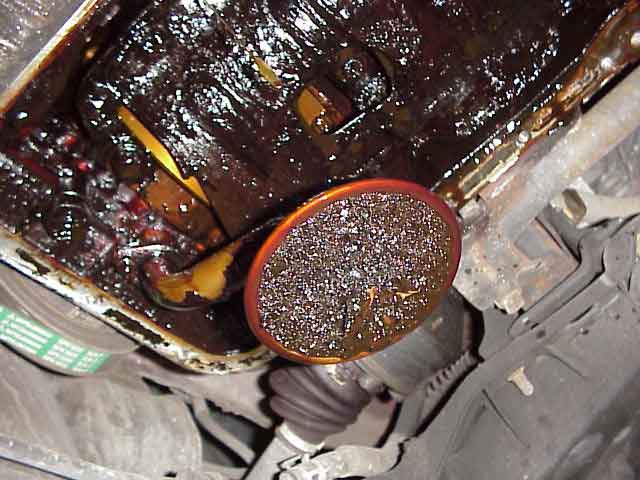

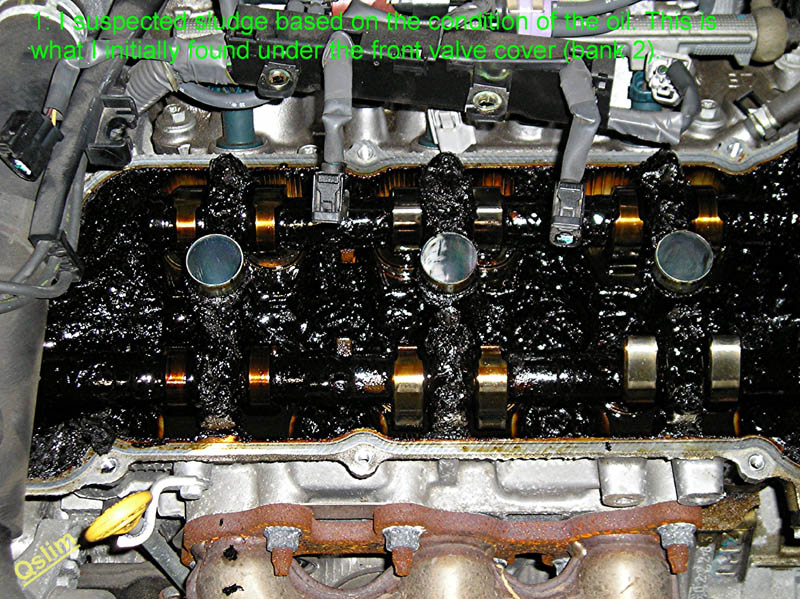
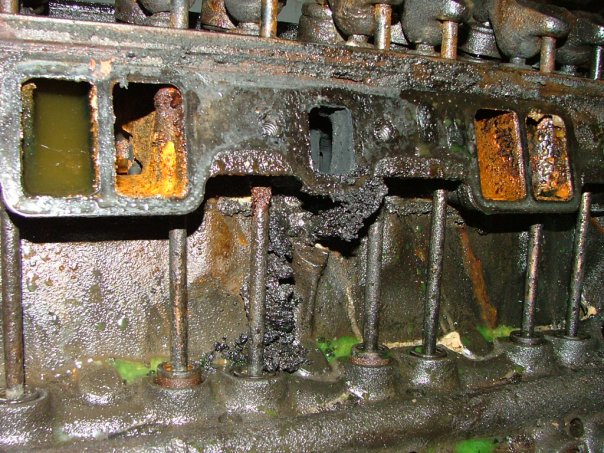
LEAKING GASKETS< BAD PVC VALVES FAILURE TO CHANGE OIL ALL RESULT IN ENGINE DAMAGE
or don't you ever find you need to use , used or salvage yard parts that could used a bit of cleaning?

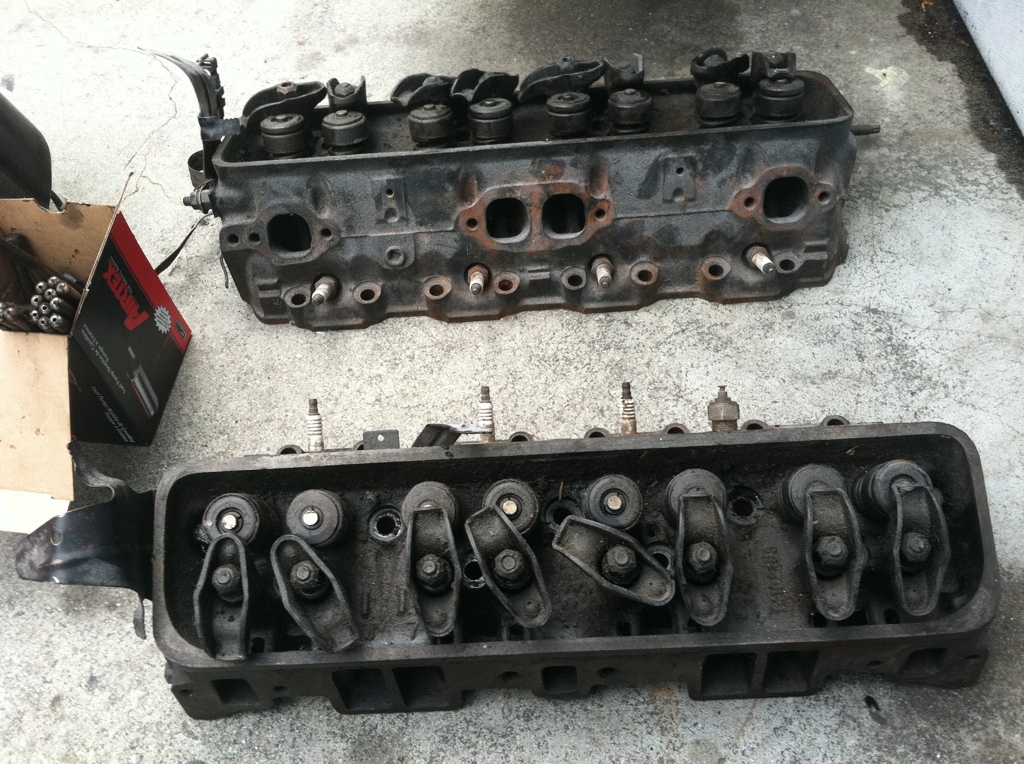
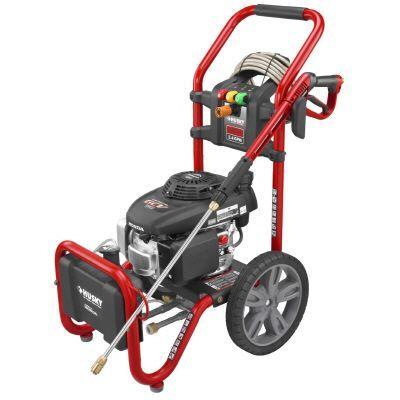
you might be amazed at what a bit of good solvent detergent a stiff metal brush and a PRESSURE CLEANER could do to clean that block up
the correct route, to removing the waxy sludge is to remove and disassemble the engine and clean it thoroughly,, a completely disassembled engine can be cleaned with a high pressure washer ans solvent and a few metal scrub brushes to an amazing level,, because the crud is bound to be packed with micro abrasive crud, oils high in paraffin like some of the older Quaker state strait 30w tend to sludge up faster than others.
higher engine temps tend to form varnishes and residue faster and naturally frequent oil changes and a high quality oil with lots of sludge solvents & detergents helps delay the sludge formation.
sludge forms when the engine doesn,t get frequent oil changes or the engines not run long enough to heat up and boil out moisture if the oil fails to reach and maintain a minimum temp of 215F for at least 15 minutes theres frequently enough moisture left in any engine to form that mix of oil and moisture, its usually found in valve covers, and your timing cover because, being thin sheet metal in most cases, they cool a bit faster than the lower larger heavy cast components in the engine , a working PVC and breather assembly or a CATCH CAN can generally REDUCE but not totally remove the problem
get out a large drain pan and remove the oil pan plug, drain the oil, remove the oil filter and pull both rocker covers and if you want to do a much better job pull the intake for lifter gallery access and break up and remove as much sludge from the engine as you can reach,, replace the valve covers and intake, you really don,t want to pump a great deal of loose crud under pressure thru the oil passages and bearing surfaces, so remove all you can physically, then pour a mix of about two quarts of diesel fuel and 4 quarts of cheap 10w30 weight oil thru the engine and let it drain out into a oil catch pan,after letting the engine idle for about 5 minutes to flush out as much crud as will flow out easily,you DON,t WANT to run anything but oil in the engine under load, as it will tend to damage the bearing surfaces and replace the oil and oil filter after the diesel/oil flush has drained, refill the engine with 2 quarts of MARVEL MYSTERY OIL and several quarts of a good synthetic oil and a new oil filter, then drive the car for a couple days, and drain and replace the oil and filter with the same mix at least twice , as the solvents and detergents will tend to break up the remaining sludge. then use the same mix of oils for the next few oil changes but change oil at UNDER 2500 mile intervals, , your engine should look far cleaner in about 3-4 weeks time, sludge will dissolve fairly fast with a mix of 2 quarts of MARVEL MYSTERY OIL and several quarts of a good synthetic oil but the filter will not trap 100% of the crud so both the oil and filter will need to be changed frequently, until the engine clean internally and after that ID suggest going no more than 5000 miles between changes
there are ENGINE FLUSH PRODUCTS, but you DON,t WANT to run anything but oil in the engine under load, as it will tend to damage the bearing surfaces
http://www.ruralking.com/flush-5-minute ... 3731303230
http://www.z1motorsports.com/g37_370z/p ... ts_id=2476
http://www.ehow.com/how_2111439_perform ... h-car.html
http://www.castrol.com/castrol/generica ... Id=7018508
http://www.nytimes.com/2007/02/04/autom ... LUDGE.html
http://www.synpsg.com/Oil_Sludge_Problem.html
viewtopic.php?f=87&t=4636&p=12610&hilit=catch#p12610
http://www.ls1tech.com/forums/racers-lo ... ld-up.html
http://www.tegger.com/hondafaq/sludge/c ... ludge.html
obviously if you want any engine to continue to function, and a dependable source of constant cooling oil flow over moving parts is mandatory, adding shrapnel screens makes that frequent oil changes are MANDATORY, because the cheaper oils tend to have higher concentrations of paraffin wax in the base oil that after a while degrades and forms a waxy sludge.
be honest with yourself here! installing shrapnel screens on a street driven car should only be considered if your 100% sure your not going to ignore a consistent maintenance schedule and even then a #6 grid or #8 mesh is fine as ID suggest be used, NEVER window screening , like this pictured below

THE SCREEN ABOVE IS TOO SMALL TO BE IDEAL

while I generally use stainless 6 or 8 mesh screens theres lots of options that will work just fine, just remember to keep the oil changed regularly or theres some potential for sludge to clog ANY size shrapnel screens
sludge build up, due to oil degrading or lack of frequent oil changes, will quickly clog a fine mesh screen resulting in loss of oil flow reaching and cooling internal parts, this is rarely an issue on most race engines because inspection and maintenance tends to be very frequently done, but it can quickly result in a worn engine if maintenance is lacking or cheap oil is used
all oils in time form that sludge, but the better synthetics are far less prone to do so rapidly
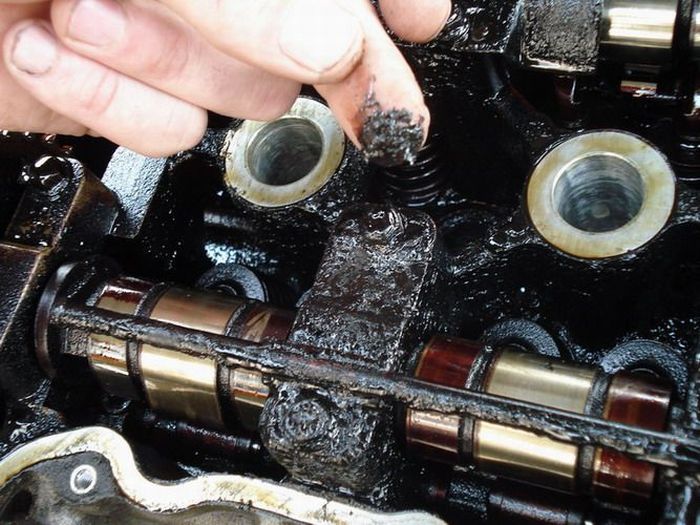

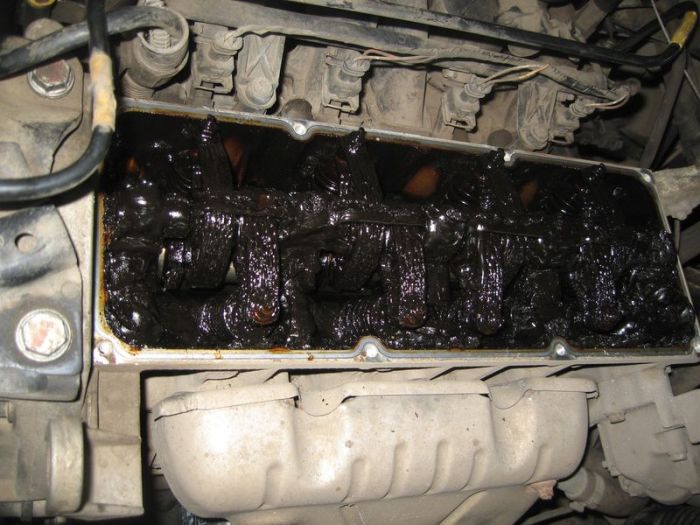
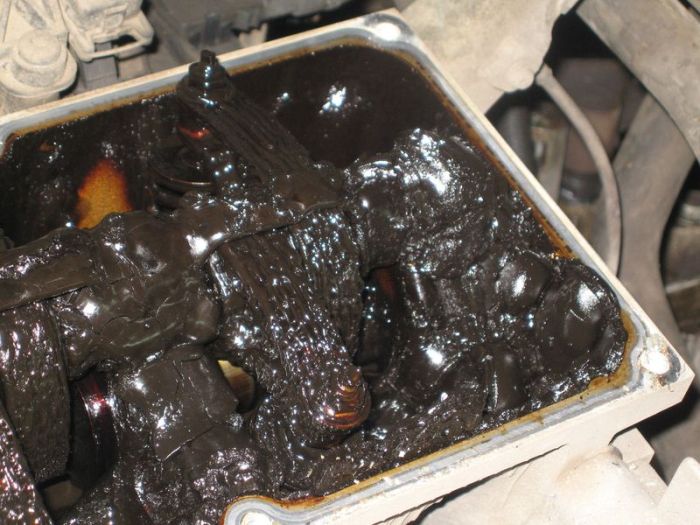
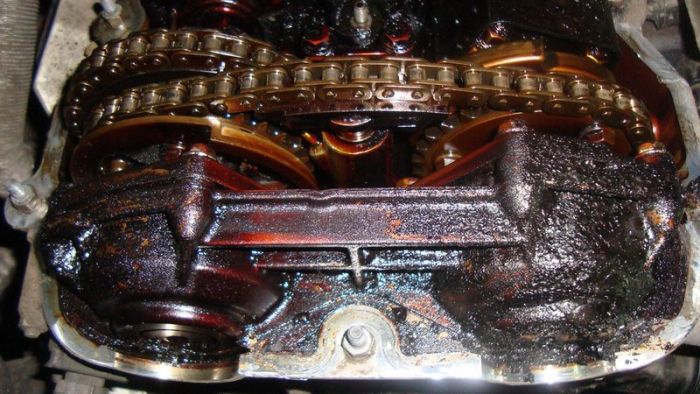
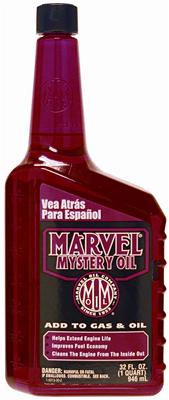
adding a quart of marvel mystery oil at each oil change with its high levels of detergent additives to replace one quart of the better quality synthetic oil used, and swapping both oil and filter at least every 7000 miles, tends to preclude the sludge build up, the high detergent levels tend to hold crud in suspension better and tends to help the filter grab it as is passing thru, obviously a quality oil filter , thats frequently replaced,is mandatory in this process
obviously, if you have coolant getting mixed with the oil theres a coolant leak into the engine, you could be dealing with a blown head gasket, leaking intake gasket, cracked cylinder head, cracked block, loose valve guide or other issues so you need to tear it down and locate the source of the coolant getting into your oil before it does major damage, which it will rather quickly




LEAKING GASKETS< BAD PVC VALVES FAILURE TO CHANGE OIL ALL RESULT IN ENGINE DAMAGE
or don't you ever find you need to use , used or salvage yard parts that could used a bit of cleaning?



you might be amazed at what a bit of good solvent detergent a stiff metal brush and a PRESSURE CLEANER could do to clean that block up
the correct route, to removing the waxy sludge is to remove and disassemble the engine and clean it thoroughly,, a completely disassembled engine can be cleaned with a high pressure washer ans solvent and a few metal scrub brushes to an amazing level,, because the crud is bound to be packed with micro abrasive crud, oils high in paraffin like some of the older Quaker state strait 30w tend to sludge up faster than others.
higher engine temps tend to form varnishes and residue faster and naturally frequent oil changes and a high quality oil with lots of sludge solvents & detergents helps delay the sludge formation.
sludge forms when the engine doesn,t get frequent oil changes or the engines not run long enough to heat up and boil out moisture if the oil fails to reach and maintain a minimum temp of 215F for at least 15 minutes theres frequently enough moisture left in any engine to form that mix of oil and moisture, its usually found in valve covers, and your timing cover because, being thin sheet metal in most cases, they cool a bit faster than the lower larger heavy cast components in the engine , a working PVC and breather assembly or a CATCH CAN can generally REDUCE but not totally remove the problem
get out a large drain pan and remove the oil pan plug, drain the oil, remove the oil filter and pull both rocker covers and if you want to do a much better job pull the intake for lifter gallery access and break up and remove as much sludge from the engine as you can reach,, replace the valve covers and intake, you really don,t want to pump a great deal of loose crud under pressure thru the oil passages and bearing surfaces, so remove all you can physically, then pour a mix of about two quarts of diesel fuel and 4 quarts of cheap 10w30 weight oil thru the engine and let it drain out into a oil catch pan,after letting the engine idle for about 5 minutes to flush out as much crud as will flow out easily,you DON,t WANT to run anything but oil in the engine under load, as it will tend to damage the bearing surfaces and replace the oil and oil filter after the diesel/oil flush has drained, refill the engine with 2 quarts of MARVEL MYSTERY OIL and several quarts of a good synthetic oil and a new oil filter, then drive the car for a couple days, and drain and replace the oil and filter with the same mix at least twice , as the solvents and detergents will tend to break up the remaining sludge. then use the same mix of oils for the next few oil changes but change oil at UNDER 2500 mile intervals, , your engine should look far cleaner in about 3-4 weeks time, sludge will dissolve fairly fast with a mix of 2 quarts of MARVEL MYSTERY OIL and several quarts of a good synthetic oil but the filter will not trap 100% of the crud so both the oil and filter will need to be changed frequently, until the engine clean internally and after that ID suggest going no more than 5000 miles between changes
there are ENGINE FLUSH PRODUCTS, but you DON,t WANT to run anything but oil in the engine under load, as it will tend to damage the bearing surfaces
http://www.ruralking.com/flush-5-minute ... 3731303230
http://www.z1motorsports.com/g37_370z/p ... ts_id=2476
http://www.ehow.com/how_2111439_perform ... h-car.html
http://www.castrol.com/castrol/generica ... Id=7018508
http://www.nytimes.com/2007/02/04/autom ... LUDGE.html
http://www.synpsg.com/Oil_Sludge_Problem.html
viewtopic.php?f=87&t=4636&p=12610&hilit=catch#p12610
http://www.ls1tech.com/forums/racers-lo ... ld-up.html
http://www.tegger.com/hondafaq/sludge/c ... ludge.html
obviously if you want any engine to continue to function, and a dependable source of constant cooling oil flow over moving parts is mandatory, adding shrapnel screens makes that frequent oil changes are MANDATORY, because the cheaper oils tend to have higher concentrations of paraffin wax in the base oil that after a while degrades and forms a waxy sludge.
be honest with yourself here! installing shrapnel screens on a street driven car should only be considered if your 100% sure your not going to ignore a consistent maintenance schedule and even then a #6 grid or #8 mesh is fine as ID suggest be used, NEVER window screening , like this pictured below

THE SCREEN ABOVE IS TOO SMALL TO BE IDEAL

while I generally use stainless 6 or 8 mesh screens theres lots of options that will work just fine, just remember to keep the oil changed regularly or theres some potential for sludge to clog ANY size shrapnel screens
sludge build up, due to oil degrading or lack of frequent oil changes, will quickly clog a fine mesh screen resulting in loss of oil flow reaching and cooling internal parts, this is rarely an issue on most race engines because inspection and maintenance tends to be very frequently done, but it can quickly result in a worn engine if maintenance is lacking or cheap oil is used
all oils in time form that sludge, but the better synthetics are far less prone to do so rapidly






adding a quart of marvel mystery oil at each oil change with its high levels of detergent additives to replace one quart of the better quality synthetic oil used, and swapping both oil and filter at least every 7000 miles, tends to preclude the sludge build up, the high detergent levels tend to hold crud in suspension better and tends to help the filter grab it as is passing thru, obviously a quality oil filter , thats frequently replaced,is mandatory in this process
